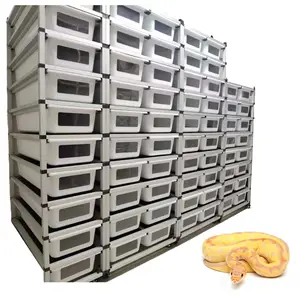Phổ biến trong ngành của bạn

Nhà Máy bán hàng trực tiếp đa chức năng ngang ban nhạc đã thấy máy chế biến gỗ Máy cưa từ Trung Quốc
1.940,00 US$ - 2.140,00 US$
Đơn hàng tối thiểu: 1 Bộ


10000r/min Ngọc Khắc Máy đa-góc Cắt băng ghế dự bị mài đánh bóng máy bảng Saw
35,00 US$ - 46,00 US$
Đơn hàng tối thiểu: 10 Cái
Vận chuyển mỗi chiếc: 18,82 US$


Máy Cưa Cắt Một Đầu Chất Lượng Cao Giá Xuất Xưởng Máy Cưa Cửa Sổ Nhôm Cửa Sổ Trượt
700,00 US$ - 820,00 US$
Đơn hàng tối thiểu: 1 Bộ


1325/1530/1560/2030 chính xác công cụ máy cắt Plasma CNC Máy cắt plasma
3.600,00 US$ - 4.000,00 US$
Đơn hàng tối thiểu: 1 Bộ


Ấn Độ Mù Tạt Gốc Máy Cắt Lát/Khoai Lang Slicer/Lotus Root Vòng Máy Cắt Lát
400,00 US$ - 800,00 US$
Đơn hàng tối thiểu: 1 Bộ

Ấn Độ Paan Cutter Trầu Nut Cutter Capparis Moonii Máy Cắt Cau Catechu Máy Cắt
7.000,00 US$ - 12.000,00 US$
Đơn hàng tối thiểu: 1 Bộ

Chuyên Nghiệp Roped Balding Tóc Clippers Mua Máy Cắt Tóc, Máy Cắt Tóc Ấn Độ
3,95 US$
Đơn hàng tối thiểu: 3000 Cái

Máy Cắt Khối Lập Phương Trái Cây Công Nghiệp Chip Pringle Quy Mô Nhỏ Máy Làm Khoai Tây Chiên Rau Củ Ấn Độ
1.100,00 US$ - 1.200,00 US$
Đơn hàng tối thiểu: 1 Bộ

Thương mại điện salad máy cắt bền Ấn Độ Rau cắt dưa chuột Máy cắt
350,00 US$ - 600,00 US$
Đơn hàng tối thiểu: 1 Bộ

Pakistan Ngày Cube Cutter, Ấn Độ Ngày Cắt Máy Móc
Sẵn sàng vận chuyển
11.000,00 US$
Đơn hàng tối thiểu: 2 Bộ
Vận chuyển mỗi chiếc: 6.905,00 US$

Tự động kẹo hạnh phúc dây chuyền chế biến cho Đậu Phộng Chikki Máy Làm
9.000,00 US$
Đơn hàng tối thiểu: 1 Bộ
Các tìm kiếm liên quan:

Giá Máy Cắt Đá Granite Đá Cẩm Thạch Làm Đá Kerb
10.580,00 US$ - 11.380,00 US$
Đơn hàng tối thiểu: 1 Bộ

Chikki Ngũ Cốc Năng Lượng Protein Snack Bar Dây Chuyền Sản Xuất Sesame Peanut Candy Bar Hình Thành Và Máy Cắt
5.000,00 US$
Đơn hàng tối thiểu: 1 Đơn vị

Chất Lượng Cao Lớn Đá Mỏ Khối Chuỗi Saw Máy Cắt Ấn Độ Đá Granite Khối Và Máy Cắt Đá Cẩm Thạch Giá
669,00 US$
Đơn hàng tối thiểu: 1 Đơn vị

Đa chức năng pháp khoai tây chiên cắt Rau Trái Cây Slicer khoai tây Chopper máy-Mua pháp Chip Máy cắt
201,00 US$ - 209,00 US$
Đơn hàng tối thiểu: 1 Hộp

Cao theo yêu cầu thép không gỉ hành tây Slicer Máy cắt để sử dụng Máy chế biến thực phẩm với giá bán buôn
280,00 US$ - 295,00 US$
Đơn hàng tối thiểu: 1 Cái


Cao theo yêu cầu thép không gỉ hành tây Slicer Máy cắt để sử dụng Máy chế biến thực phẩm với giá bán buôn
1.360,00 US$ - 1.500,00 US$
Đơn hàng tối thiểu: 1 Bộ

FC-582 hành tây Khoai Tây Chip Slicer dứa hành tây dừa cắt lát máy làm
5.400,00 US$ - 6.000,00 US$
Đơn hàng tối thiểu: 1 Bộ
Vận chuyển mỗi chiếc: 1.060,00 US$

Kim Cương Hình Dạng Đấu Thầu Trẻ Dừa Trấu Da Lột Cắt Tỉa Máy Cắt Với Đáy Chopper
Sẵn sàng vận chuyển
2.450,00 US$
Đơn hàng tối thiểu: 1 Bộ
Vận chuyển mỗi chiếc: 482,00 US$

Hiena T9 Máy cạo râu điện người đàn ông chất lượng tốt nhất tóc tông đơ cắt không thấm nước ngựa BÉ mũi và tai Máy cắt tóc cho nam giới
Sẵn sàng vận chuyển
3,20 US$ - 3,80 US$
Đơn hàng tối thiểu: 10 Cái
Vận chuyển mỗi chiếc: 19,25 US$

Giá Tốt Nhất Thương Mại Khách Sạn Nhà Hàng Điện Trái Cây Rau Mincer Cutter Máy Cắt
400,00 US$ - 450,00 US$
Đơn hàng tối thiểu: 1 Cái

Công nghiệp gạch cắt một máy đánh bóng tự động nhà Sản xuất nhà cung cấp độ chính xác cao chamfering chức năng trong Ấn Độ
8.700,00 US$ - 9.000,00 US$
Đơn hàng tối thiểu: 1 Bộ

Tự Động Bảng Loại Ấn Độ Gooseberry Core Remover Táo Tàu Khô Ngày Pitter Ngày Đỏ Mận Máy Rỗ
2.680,00 US$ - 3.080,00 US$
Đơn hàng tối thiểu: 1 Bộ

Máy cắt mới cho thợ cắt tóc cắt tóc không dây cắt Tóc máy râu tông đơ cho nam giới Sẵn sàng vận chuyển
Sẵn sàng vận chuyển
 Sẵn sàng vận chuyển
Sẵn sàng vận chuyển3,00 US$ - 4,90 US$
Đơn hàng tối thiểu: 3 Cái
Vận chuyển mỗi chiếc: 5,65 US$

Tốt nhất bán Ấn Độ Hạt Giống Ớt tách separator máy/hạt tiêu khô băm nhỏ Shredder máy
680,00 US$ - 760,00 US$
Đơn hàng tối thiểu: 1 Bộ

Màu xanh lá cây dừa dịu dàng dừa lột băm nhỏ cắt tỉa Máy chế biến dòng Ấn Độ với nắp
0,06 US$ - 0,10 US$
Đơn hàng tối thiểu: 8000 Cái
Vận chuyển mỗi chiếc: 7,58 US$

USB có thể sạc lại Vàng Tóc cắt tóc cắt người đàn ông salonhair cắt máy cắt tóc chuyên nghiệp không dây tóc tông đơ
9,99 US$
Đơn hàng tối thiểu: 500 Cái

Chất Lượng Hàng Đầu Chuối Chip Máy Chuối Slicer Khoai Tây Chiên Làm Giá Máy
1.300,00 US$ - 1.500,00 US$
Đơn hàng tối thiểu: 1 Bộ

USB râu Vàng Tóc cắt tóc cắt người đàn ông salonhair cắt máy cắt tóc chuyên nghiệp không dây tóc tông đơ

9,99 US$
Đơn hàng tối thiểu: 500 Cái
Vận chuyển mỗi chiếc: 1,97 US$

Chất lượng cao SSM 50 bán tự động đá chia máy 50 tấn công suất có sẵn giá bán buôn Ấn Độ nhà sản xuất Nhà cung cấp
7.808,78 US$
Đơn hàng tối thiểu: 1 Cái

Quy mô nhỏ khoai tây chiên khoai tây chiên tươi làm cho giá máy/Ấn Độ khoai tây chiên máy
370,00 US$ - 400,00 US$
Đơn hàng tối thiểu: 1 Bộ

Quy mô nhỏ khoai tây chiên khoai tây chiên tươi làm cho giá máy/Ấn Độ khoai tây chiên máy
370,00 US$ - 400,00 US$
Đơn hàng tối thiểu: 1 Bộ

Thiết Bị Chế Biến Thực Phẩm Công Nghiệp Máy Móc Dicer Máy Cắt Rau Slicer Hành Tây Ấn Độ Chopper
550,00 US$ - 570,00 US$
Đơn hàng tối thiểu: 1 Bộ
Vận chuyển mỗi chiếc: 2.400,00 US$

Nhà máy bán hàng trực tiếp cắt đá granite máy đa máy cắt đá cẩm thạch
20.000,00 US$ - 21.000,00 US$
Đơn hàng tối thiểu: 1 Cái

Kim loại cơ thể T9 USB điện tóc Clipper cho nam giới Máy cắt tóc có thể sạc lại người đàn ông cạo râu tông đơ cắt tóc kỹ thuật râu
Sẵn sàng vận chuyển
1,99 US$ - 2,99 US$
Đơn hàng tối thiểu: 5 Cái
Vận chuyển mỗi chiếc: 3,62 US$
- 10%

Thả Vận Chuyển Tông Đơ Cắt Tóc Sạc Được USB T9 Tông Đơ Cắt Tóc Không Dây 0Mm Cho Nam Tông Đơ Cắt Tóc Thiết Kế Màn Hình LCD Phật Ấn Độ
Sẵn sàng vận chuyển
3,24 US$ - 6,07 US$
Đơn hàng tối thiểu: 1 Cái
Vận chuyển mỗi chiếc: 11,51 US$
Các danh mục hàng đầu
Giới thiệu về máy cắt ấn độ
Alibaba.com cung cấp các sản phẩm 4738 máy cắt ấn độ. Có rất nhiều máy cắt ấn độ lựa chọn dành cho bạn, chẳng hạn như thực phẩm, nhà hàng, và trái cây. Bạn cũng có thể chọn từ thực phẩm cửa hàng, khách sạn, và nhà sử dụng máy cắt ấn độ. Cũng như từ động cơ, plc, và động cơ máy cắt ấn độ.Và bất kể máy cắt ấn độ là philippines, việt nam, hay indonesia.











